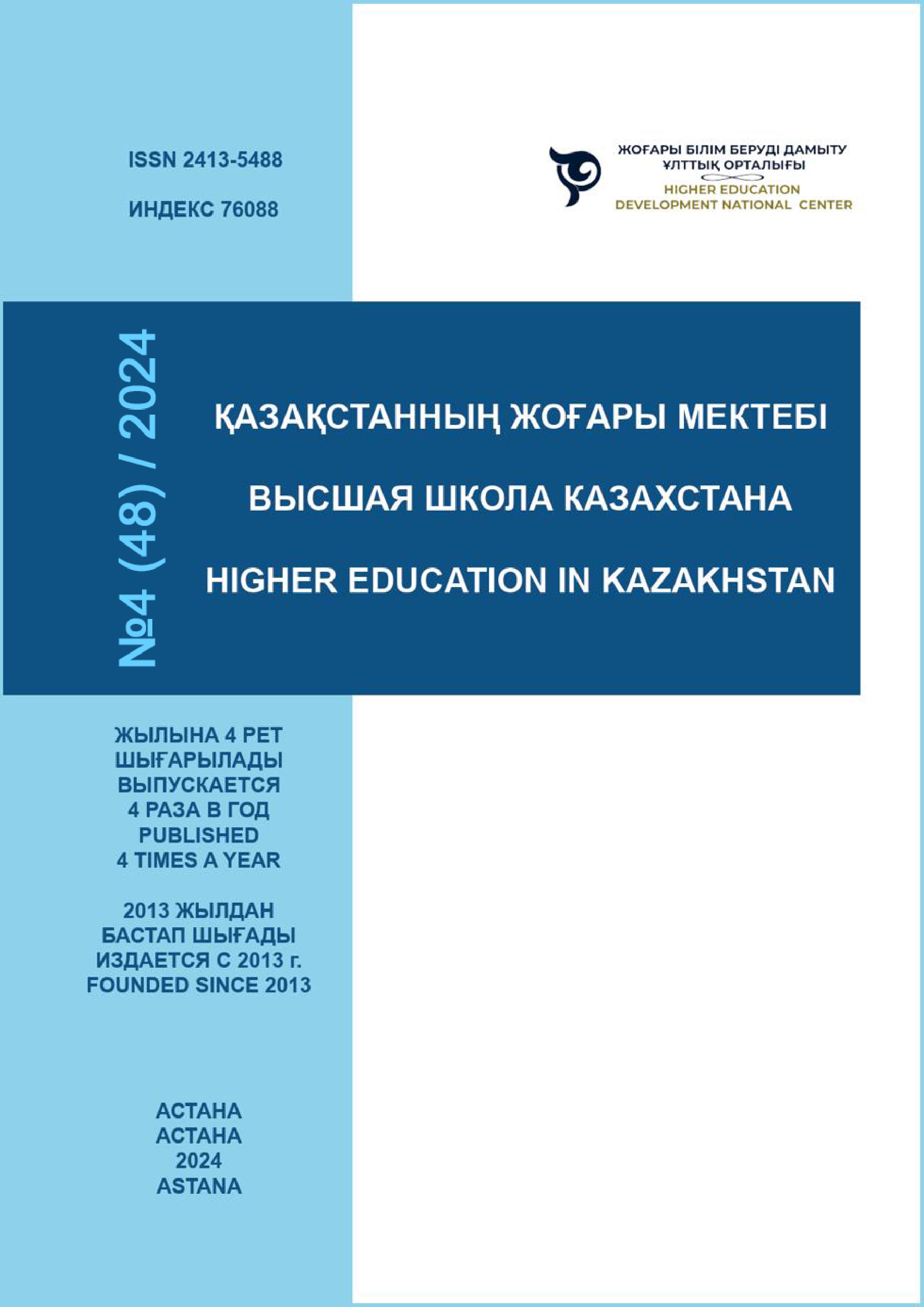THE USE OF MEDIA AND DIGITAL TECHNOLOGIES IN LEARNING ENGLISH AS A FOREIGN LANGUAGE
DOI:
https://doi.org/10.59787/2413-5488-2024-48-4-44-51Кілт сөздер:
digital technologies, educational tool, Internet, motivation, classroom, learners, educational mediaАңдатпа
English has become a global language and has taken a significant place in the world. With the advent of globalization, the demand for learning English as a foreign language (FL) has increased dramatically. The use of media and digital technologies is becoming more and more popular in learning English as FL. In this article, we will explore the use of media and digital technologies in learning English as FL. The article discusses the increasing popularity of digital resources such as learning apps, online platforms, and multimedia tools among young learners and adults. It emphasizes the convenience and suitability of these resources in facilitating language acquisition and enhancing English proficiency. Furthermore, the article explores the importance of learner interest and satisfaction in utilizing social media for language learning
Әдебиеттер тізімі
Eady, I., & Wilson, J. D. (2004). The influence of music on core learning. Education, 125(2), 243-249. https://link.gale.com/apps/doc/A127013750/AONE?u=anon~c6cb56a7&sid=googleScholar&xid=81a9107b
Ettlinger, M., Margulis, E. H., & Wong, P. C. (2011). Implicit memory in music and language. Frontiers in psychology, 2, 211. doi: 10.3389/fpsyg.2011.00211
Hidayat, I., Ismail, T., Taqi, M., & Yulianto, A. S. (2022). Investigating In Disclosure Of Carbon Emissions: Influencing The Elements Using Panel Data. Jurnal Reviu Akuntansi dan Keuangan, 12(3), 721-732. https://doi.org/10.22219/jrak.v12i3.23072
Hidi, S., & Renninger, K. A. (2006). The Four-Phase Model of Interest Development. Educational Psychologist, 41(2), 111–127. https://doi.org/10.1207/s15326985ep4102_4
Hong, J. C., Hwang, M. Y., Szeto, E., Tsai, C. R., Kuo, Y. C., & Hsu, W. Y. (2016). Internet cognitive failure relevant to self-efficacy, learning interest, and satisfaction with social media learning. Computers in Human Behavior, 55, 214-222. DOI.ORG/10.1016/J.CHB.2015.09.010
Horn, C. A. (2007). English Second Language Learners: Using Music to Enhance the Listening Abilities of Grade Ones. University of South Africa. https://core.ac.uk/download/pdf/43165719.pdf
Koelsch, S. (2011). Towards a neural basis of processing musical semantics. Physics of life reviews, 8(2), 89-105. HTTPS://DOI.ORG/10.1016/J.PLREV.2011.04.004
Laurillard, D. (2002). Rethinking University Teaching: A Conversational Framework for the Effective Use of Learning Technologies (2nd ed.). Routledge. https://doi.org/10.4324/9781315012940
Milovanov, R., & Tervaniemi, M. (2011). The interplay between musical and linguistic aptitudes: a review. Frontiers in psychology, 2, 321. doi: 10.3389/fpsyg.2011.00321
Mora, C. F. (2000). Foreign language acquisition and melody singing. ELT Journal, 54(2), 146-152. https://doi.org/10.1093/elt/54.2.146
Rotgans, J. I., & Schmidt, H. G. (2014). Situational interest and learning: Thirst for knowledge. Learning and Instruction, 32, 37-50. HTTPS://DOI.ORG/10.1016/J.LEARNINSTRUC.2014.01.002
Schön, D., & François, C. (2011). Musical Expertise and Statistical Learning of Musical and Linguistic Structures. Frontiers in Psychology, 2,167. doi:10.3389/fpsyg.2011.00167
Stansell, J. W. (2005). The use of music for learning languages. University of Illinois at Urbana-Champaign.
Strait, D. L., & Kraus, N. (2011). Can you hear me now? Musical training shapes functional brain networks for selective auditory attention and hearing speech in noise. Frontiers in psychology, 2, 113. https://doi.org/10.3389/fpsyg.2011.00113














